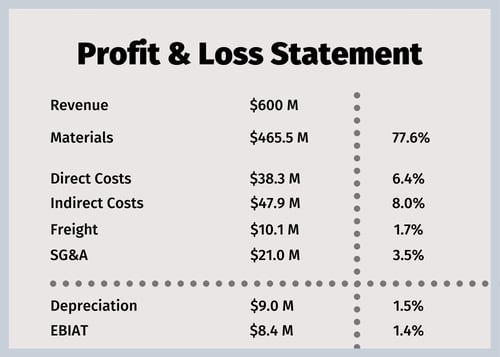There have been countless times throughout my career where I was either a recommender or approver of significant IT projects. And, I must say, I have always experienced a prevailing attitude among senior management that these transformations are black holes and money pits, including a Digital Supply Chain transformation.
I believe many (if not most) companies still feel this way. Why? There is a litany of cautionary tales: From Hershey’s widely reported $100 million failed ERP implementation in 2015 to our own personal stories.
I’ve seen businesses engage consulting firms only to give up about six months in after slow progress and skyrocketing costs; I’ve witnessed first-hand how a $15 million project ballooned to $40 million before it was even finished.
Let’s talk about why this happens and what can be done about it.
Common Left Turns in Digital Supply Chain Transformations
Big companies tend to select an enterprise system for its core finance modules and the need – no, requirement – for a single version of the truth in accounting, as well as a chain of internal controls driven by the 2002 Sarbanes-Oxley Act.
Selecting a system for other functions, like supply chain management, is an afterthought. Yet, I’d go so far as to say that complex, overlapping processes on multiple legacy systems, lacking a single view, are at the root of supply chain complications in big companies.
It’s not just big businesses; small companies may find that popular SaaS ERP platforms come with surprises and extra costs (i.e. connecters to Amazon, Walmart and eBay marketplaces and/or multi-jurisdiction tax calculators).
Which brings us back to justifying these projects in the first place. All purveyors I know push ROI calculators to their prospective clients to help warrant the expense. But they always seem to fall short of that intended purpose.
Putting Some Hard Numbers to Hazy Benefit Claims
Let’s take a mid-size company, or division of $600 million revenue, operating in a competitive field with a less than perfect order fill rate with the P&L indicated in the image shown here.

If the new system can make a modest improvement, say 5%, with the on-time, in-full (OTIF) order fill rate, it would generate $30 million of additional revenue. With a contribution margin of 10.4%, the EBIAT impact will be a positive $3.1 million or 36.9%.
Since we’ve been discussing recently how invaluable end-to-end supply chain visibility is to managing disruption, here are a few more – quite achievable – scenarios when leveraging the software:
Reduce inventory liability. Say the company guidelines are to write-off 0.6% as a percent of revenue based on historical performance: the value of write-off would be $3.61 million. Let’s say the new system will provide visibility to reduce excess and obsolete inventory by 25%. That calculates to a $900,000 improvement, or an EBIAT improvement of 10.7%.
Better match orders to demand. Suppose your Asian supply chain regularly incurs freight premiums from imprecise planning and frequent order expedites. If a new system, providing broader supply chain visibility, could cut that in half, it would be worth $5.43 million, with an EBIAT impact of $1.3 million or 15.9%.
Energize velocity and decrease your cash conversion cycle. Let’s say you’re turning your inventory 7x and the average inventory value is $67 million ($465.5/7). You believe your new supply chain visibility solution can improve it to 10 turns – a net reduction of $20.45 million. If the carrying cost is 4%, you would realize an improvement in cash flow of over $820,000.
Now Apply Your Own Figures
Get a recent income statement and substitute your own numbers in place of mine. Set some achievable targets for key imperatives and arrive at improvement ratios for each one. Go for the ones that make the biggest difference.
Depending on your company’s accounting policy regarding the amortization of capitalized software cost for your systems investment, you will know the denominator for calculating your return on investment.
As customer demands and expectations rise and black swan events become inevitable, supply chain digital transformations – especially gaining end-to-end visibility – become critical to survival and success. Companies are increasingly seeing the vast potential and value of innovative supply chain software. The problem is, decision-makers often don’t realize what they’re getting into; once they see the costs rise, the investment no longer appears justified without proper risk management.
It’s your job to show that these systems are not only indispensable, but that their value will far exceed the expense – in hard figures that will combat any growing doubt. Numbers speak louder than words – do the math, present the ‘benefit’ figures, and show how they tip the scales in favor of your supply chain digital transformation.

